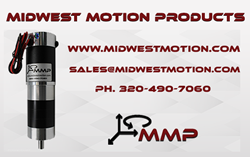Harness the Power of AI/ML for Predictive Maintenance: Get Ahead of Pump and Motor Failures
In today's fast-paced industrial landscape, ensuring the smooth operation of machinery is crucial to maintaining productivity and avoiding costly downtime. One of the most significant challenges in industrial maintenance is predicting equipment failures before they occur. Traditional maintenance approaches, often reactive or scheduled, can lead to unexpected breakdowns and expensive repairs. However, with advancements in artificial intelligence (AI) and machine learning (ML), businesses can now leverage predictive maintenance systems to anticipate pump and motor failures weeks in advance. In this blog post, we'll explore how AI/ML-based predictive maintenance systems work and why they are a game-changer for modern industries.
Understanding Predictive Maintenance
Predictive maintenance is a proactive approach that involves monitoring the condition of equipment to predict when maintenance should be performed. Unlike traditional maintenance strategies-such as preventive maintenance, which schedules maintenance at regular intervals, or reactive maintenance, which addresses issues only after they occur-predictive maintenance aims to anticipate problems before they lead to equipment failure. This approach not only reduces downtime but also extends the lifespan of machinery and minimizes maintenance costs.
The Role of AI and ML in Predictive Maintenance
Artificial intelligence and machine learning have revolutionized predictive maintenance by providing sophisticated tools to analyze vast amounts of data and identify patterns that may indicate potential equipment failures. Here's how AI/ML-based predictive maintenance systems work:
Data Collection: The first step involves gathering data from various sources, such as sensors embedded in pumps and motors. This data can include temperature, vibration, pressure, and operational parameters.
Data Processing: Once collected, the data is processed and cleaned to ensure accuracy. AI and ML algorithms then analyze the data to detect anomalies and trends that could signal impending failures.
Pattern Recognition: Machine learning models are trained to recognize patterns in historical data. By comparing real-time data with these patterns, the system can predict when and how a failure might occur.
Alert Generation: Based on the analysis, the system generates alerts, providing advance notice of potential issues. These alerts can be sent via email or text message, allowing maintenance teams to take preemptive action.
Continuous Learning: As the system gathers more data, its algorithms continue to improve, enhancing the accuracy of predictions and adapting to changes in equipment behavior.
Benefits of AI/ML-Based Predictive Maintenance
Implementing an AI/ML-based predictive maintenance system offers several advantages:
Early Detection of Issues: By predicting potential failures weeks in advance, predictive maintenance allows businesses to address issues before they escalate. This early detection helps prevent unexpected breakdowns and reduces the risk of costly repairs.
Reduced Downtime: Scheduled maintenance based on predictive insights minimizes unplanned downtime, keeping production lines running smoothly and ensuring that equipment is always in optimal condition.
Cost Savings: Proactive maintenance helps avoid the high costs associated with emergency repairs and replacement parts. Additionally, by optimizing maintenance schedules, businesses can reduce labor and material costs.
Extended Equipment Life: Regular maintenance based on accurate predictions ensures that machinery operates efficiently and lasts longer, maximizing the return on investment.
Improved Safety: Predictive maintenance reduces the likelihood of sudden equipment failures that could pose safety risks to operators. By addressing potential issues in advance, businesses create a safer working environment.
Implementing a Predictive Maintenance System
To successfully implement an AI/ML-based predictive maintenance system, consider the following steps:
Assess Your Needs: Evaluate your equipment and determine which assets would benefit most from predictive maintenance. Pumps and motors are often prime candidates due to their critical role in operations.
Choose the Right Technology: Select a predictive maintenance system that aligns with your business needs. Look for solutions that offer integration with existing systems, robust data analysis capabilities, and user-friendly interfaces.
Install Sensors: Equip your machinery with sensors to collect real-time data. Ensure that the sensors are properly calibrated and positioned to capture relevant information.
Train Your Team: Educate your maintenance team on how to interpret alerts and take action based on predictive insights. Training ensures that your team can effectively respond to notifications and perform necessary maintenance tasks.
Monitor and Adjust: Continuously monitor the performance of your predictive maintenance system and make adjustments as needed. Regularly review data and update algorithms to maintain accuracy.
Conclusion
The integration of AI and ML into predictive maintenance represents a significant advancement in industrial maintenance strategies. By leveraging these technologies, businesses can proactively manage equipment health, reduce downtime, and achieve substantial cost savings. With the ability to receive alerts weeks before pump or motor failures, companies can stay ahead of potential issues and ensure smooth, efficient operations.
Embrace the future of maintenance with AI/ML-based predictive systems and transform how you manage your machinery. For more information on implementing predictive maintenance solutions in your organization, contact our experts today.
Featured Product

